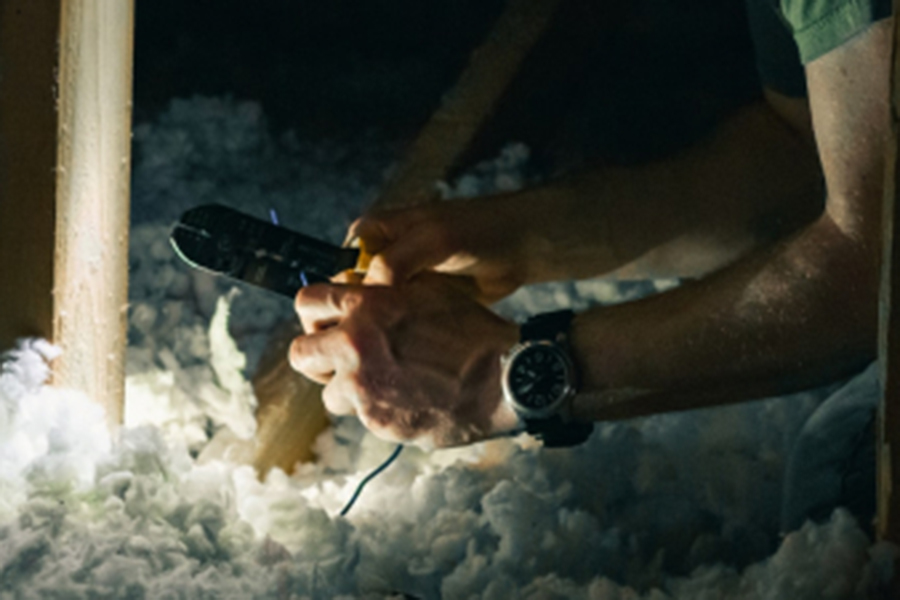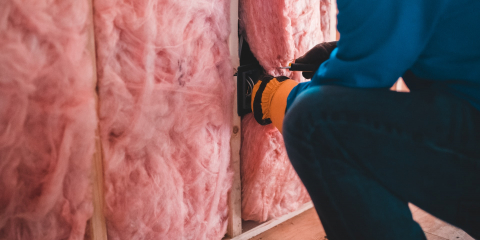Oct 19, 2022
Go Big or Go Home: Four Lessons from Whole-Home Retrofit Programs
Whole-home retrofit programs are complex and require lots of thought and care about implementation and financing. These lessons learned are just a few of the many considerations that go into developing a program.
By: Any Winslow

Drastically reducing GHG emissions from the existing residential buildings stock remains one of the biggest challenges to achieving a decarbonized energy future. Many homeowners want to “go green” and reduce their carbon footprint for the good of the environment. Others are motivated by reducing their monthly utility bills. Whatever the reason, taking on a whole-home decarbonization retrofit project is more complex than simply replacing old lightbulbs with LEDs. Streamlining the retrofit process will make it easier for homeowners to assess options, make decisions, and receive the benefits they are seeking.
Truly decarbonizing a home requires a comprehensive approach that assesses and upgrades the entirety of the building’s systems. This involves a variety of improvements such as remediating health and safety barriers, weatherizing the home with insulation and air sealing, electrifying the heating and cooling systems, adding renewable electricity supply, and integrating other efficiency measures. Traditional energy efficiency programs have tried to tackle these improvements through a piecemeal one-off approach, which leaves savings on the table and can lead to unintended consequences like oversized heating equipment and indoor air-quality issues. Undertaking comprehensive projects is typically a complex and expensive endeavor that may cause confusion and discourage all but the most devoted or knowledgeable homeowners. However, there have been many recent efforts to make home decarbonization projects comprehensive, affordable, and scalable.
NEEP has been exploring different whole-home decarbonization programs and approaches from across the globe to find the critical pieces that make them successful. We have been involved in the Total Energy Pathways (TEP) project that was inspired by the Zero Energy Now (ZEN) pilot program in Vermont. TEP seeks to decarbonize homes by bundling three major components together: weatherization, heating electrification, and renewable energy. NEEP has also been collaborating with NYSERDA and a cross-cutting group of stakeholders to develop a framework to guide the development of new whole building decarbonization plans. The framework is called Stacked Efficiency and Electrification Program (SEEP). We held more than 30 interviews with program administrators, contractors, finance gurus, tech whizzes, and policy makers to discuss what makes their models successful. For a deeper look into the approaches taken by three different programs check out our Ready Set Scale Webinar on this topic. Below are four lessons learned from our work.
Lessons Learned
Establish Goals to Streamline Program Design and Implementation
Before designing a program, it is important to consider the intended outcomes. Whether it be reducing utility bills for residents, lowering emissions, improving resident health, or something else, establishing goals will help shape and focus the program. Whole-home decarbonization programs can take many forms. Connecticut’s Weatherization Barrier Remediation Program, combines health and safety with energy efficiency because its goal is to increase efficiency and reduce energy bills in housing with pre-existing health barriers such as lead, asbestos, and mold. The goal of Ithaca’s Green New Deal plan is to achieve net zero GHG emissions so it focuses on electrification and renewable energy. Pennsylvania’s goal is to reduce energy bills through weatherization and stimulate the economy by encouraging the creation of new jobs. Once goals are established, the suite of measures and incentives can be built to support them.

Support for Financing is Important
Decarbonizing a building can be costly, ranging from an average of $20,000 to $54,000 or more. Reducing sticker shock for the customer and convincing money lenders that decarbonization is a secure investment is paramount to accelerating the uptake of whole-home retrofits. Having a finance expert on the program team is important in creating a program that accomplishes these tasks.
A finance expert can help bundle existing incentives from a number of different sources such as ratepayer energy efficiency programs, low-income energy assistance programs, and other state and federal funds. The programs that are truly scalable are those that successfully attract conventional lenders to fund retrofits. For example, BlocPower, the company responsible for implementing Ithaca, New York’s ambitious Green New Deal plan to decarbonize the entire residential and commercial building stock, has taken advantage of innovative financing to make it possible. BlocPower combined funding from various private and public streams to create a loan-loss reserve fund. This fund provides lending institutions security when providing unsecured loans and, in return, allows loans to offer lower interest rates. Because the city is retrofitting at scale, investing in the project is more attractive.
Funding can come from a wide range of places including energy efficiency programs, the Regional Greenhouse Gas Initiative (RGGI), or federal programs, to name a few. Beginning in 2020, the Federal government invested in historic legislation for infrastructure, energy affordability, climate action, and energy justice. The most notable of these historic pieces of legislation include the American Rescue Plan Act (ARPA), the Bipartisan Infrastructure Law (BIL), and the Inflation Reduction Act (IRA). These laws unlocked funds that have created massive opportunity for local governments, states, utilities, schools, and others to invest in energy efficiency and decarbonization. Billions of dollars of federal funding could be utilized to stand up whole-building decarbonization programs such as the Pennsylvania Whole-home Repair Act which is utilizing $125 million in ARPA dollars to fund the first year of the program.
Develop The Workforce For A Strong Program
Whole-building retrofits are complex. There are many moving parts that traditionally are handled by different contractors. For weatherization, a homeowner would contact a weatherization specialist. For heating, an HVAC specialist; for energy efficiency opportunities, an energy auditor; for energy a renewable energy expert…you get the point. Each has its own ins and outs and funding streams, which is, for a homeowner, incredibly confusing and unappealing. Enter the general whole-home contractor, a single point-of-contact for the building owner. A general whole-home contractor understands each decarbonization measure and knows how all of the pieces fit together. This is important for streamlining the customer experience.

The idea of a centralized planner is a common thread through existing whole-building programs. For example, the TEP and ZEN projects utilize a single point-of-contact method. In Ireland, a National Building Retrofit program was established that certifies “one-stop-shop” contractors who can access special incentives to perform comprehensive whole-home retrofits. In Massachusetts, the MassCEC Decarbonization Pathways Pilot connects homeowners with Abode Energy, a consultant who helps them create a roadmap of decarbonization measures based on their home’s needs.
In addition to the demand for more whole-home contractors, the greater clean energy workforce needs to be grown. Ensuring the supply of equipment and labor is just as important as creating demand for retrofits. Many decarbonization technologies, such as cold climate heat pumps, are newer to the market and do not have an adequate workforce to install them. ICAST utilized a model where it brings trainers to new markets and teaches the local workforce necessary skills – effectively kick-starting the area’s workforce. Pennsylvania’s Whole-home Retrofit Program has a bucket of funding specifically allocated to local workforce development so the program will both retrofit homes and develop the local workforce.
The Great Debate: Modeling vs. Prescriptive
When determining which measures should be implemented for a retrofit project, there are two primary approaches that an implementer can take – modeled vs. prescriptive. While both should result in cutting a building’s carbon emissions, each has pros and cons in terms of program administration, cost, and ease. The path an implementer takes depends on their intended outcomes.
A modeled approach uses an energy audit, historical energy usage data, and a software tool to model the energy usage and carbon emissions of a particular building. The general contractor can then explore different efficiency and decarbonization measures to find the best combination of upgrades for the individual project.
A prescriptive approach simply lists a series of measures with assumed energy and carbon savings from which a homeowner and contractor can choose. Since a prescriptive option is less complex and not customized to the specific building, it can be applied to more households and implemented faster.
In general, a modeled approach will yield greater savings but a prescriptive path can engage a wider audience. A program implementer should consider both approaches and make determinations to balance successful implementation, broad impact, and minimizing program costs.
Conclusion
Whole-home retrofit programs are complex and require lots of thought and care about implementation and financing. These lessons learned are just a few of the many considerations that go into developing a program.
Many states and jurisdictions across the region are already creating these programs. These leading programs will act as case studies for many others in the region that have identified whole-building retrofits as key mechanisms for achieving carbon reduction goals.
NEEP is full steam ahead in our project planning for next year and we intend to continue exploring whole-home retrofit models and how we can help to scale them up to meet our partners’ climate goals. In the coming year, we hope to work with states to define what a whole-home retrofit means, help launch new programs, and increase the workforce.
This post originally appeared on the NEEP website and is reprinted with permission.
Earn CEUs
Earning CEUs on the BPA Journal is a member-exclusive benefit. Please log in to complete the quiz and earn them or join as a member today.
2 Comments
Leave a Comment
You must be logged in to post a comment.






I believe I was correct regarding question #7. However it was marked incorrect thus lower my overall score..(?)
Hi Omar,
We will review and send you an email. Thanks for bringing this to our attention!
Best,
Katie